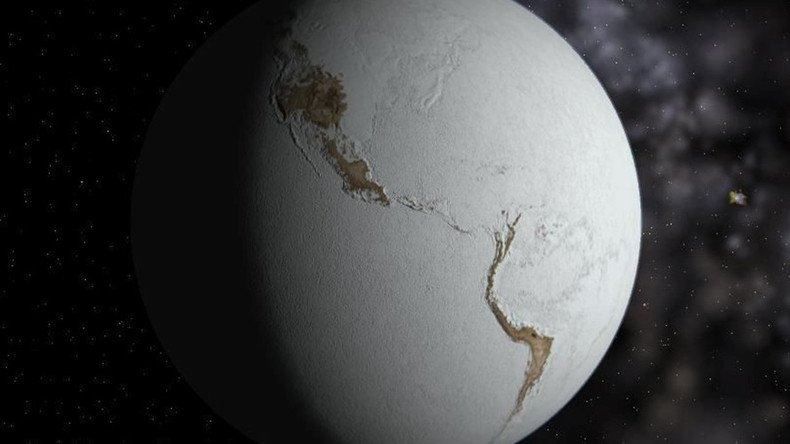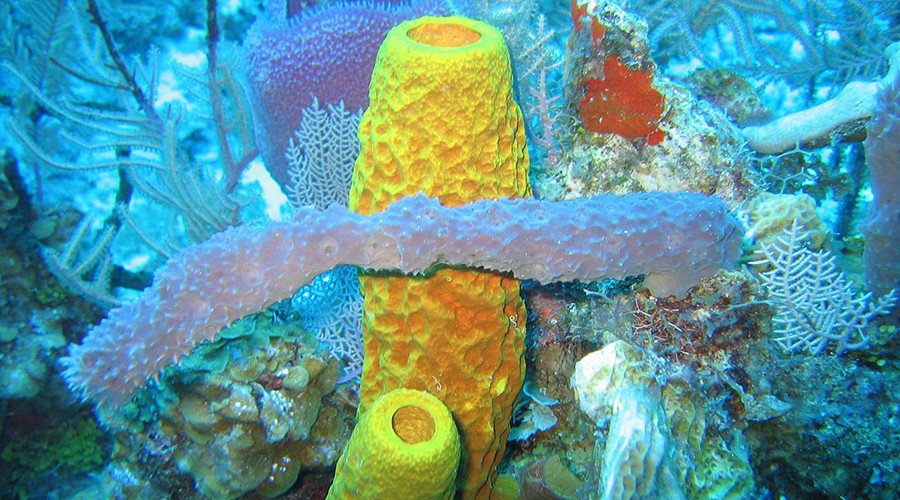100mn years of ice ages and global warming kick-started evolution of life on Earth – study

Several long ice ages over 100 million years were responsible for releasing enough oxygen for life to flourish, says a new geological study. Previously, some scientists believed newly-evolved lifeforms oxygenated the planet.
Accepted theories state that oxygen first appeared in significant quantities over 2.3 billion years ago, but the rise of the larger, more complex, air-breathing species could not happen until a sudden spike in O2 levels approximately about 600 million years ago.
Life exploded on Earth after slow rise of oxygen, study led by Philip Pogge von Strandmann https://t.co/MCnjq8hZvDpic.twitter.com/ibwBI4aZXt
— UCL News (@uclnews) December 18, 2015Trying to decipher how and why it occurred united scientists from UCL, Birkbeck, Bristol University, University of Washington, University of Leeds, Utah State University and University of Southern Denmark. Working in parallel teams, they measured selenium isotopes in rock samples dating from the period that have been found in Canada, China and the US.
“We want to find out how the evolution of life links to the evolution of our climate. The question on how strongly life has actively modified Earth’s climate, and why the Earth has been habitable for so long is extremely important for understanding both the climate system, and why life is on Earth in the first place,” said the lead researcher on the project, Philip Pogge von Strandmann from UCL Earth Sciences.

Accepted theories postulated that the single Gaskiers glaciation – that froze almost the entirety of the planet – followed by a thaw that dumped nutrients into the ocean sparked the process. The nutrients allowed cyanobacteria, known as blue-green algae, to produce more oxygen than was consumed in the depth of the oceans, oxidizing them, and creating multicellular organisms.
A fashionable theory has stated that these organisms themselves – initially simple sponges, or pizza disc-like underwater nutrient filters – produced a virtuous circle, where even more oxygen was pumped out, enabling even more complex and mobile creatures.
But the international team, which has published its findings in Nature Communications this Friday, says that the process was more gradual, likely taking three different glaciations, over 120 million years.
"We took a new approach by using selenium isotope tracers to analyze marine shales which gave us more information about the gradual changes in oxygen levels than is possible using the more conventional techniques used previously. We were surprised to see how long it took Earth to produce oxygen and our findings dispel theories that it was a quick process caused by a change in animal behavior," said von Strandmann.
And that each new freeze-thaw cycle drove evolution, not the animals themselves.

“Oxygen was like a slow fuse to the explosion of animal life. Around 635 Ma, enough oxygen probably existed to support tiny sponges. Then, after 580 Ma, strange creatures, as thin as crêpes, lived on a lightly oxygenated seafloor. Fifty million years later, vertebrate ancestors were gliding through oxygen-rich seawater. Tracking how oxygen increased is the first step towards understanding why it took so long,” explained David Catling, from the University of Washington Earth and Space Sciences.
Catling claims the knowledge will not only settle what has been one of the most heated and mysterious geological debates – the question of how the Earth became oxygenated – but will help us understand if similar processes can occur further afield.
“Ultimately, a grasp of geologic controls on oxygen levels can help us understand whether animal-like life might exist or not on Earth-like planets elsewhere,” said Catling.













